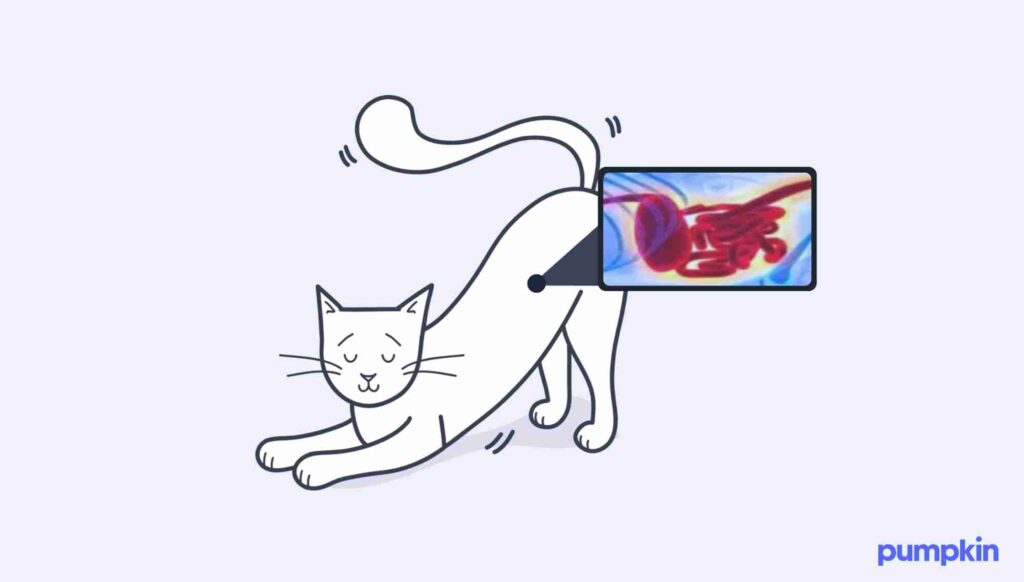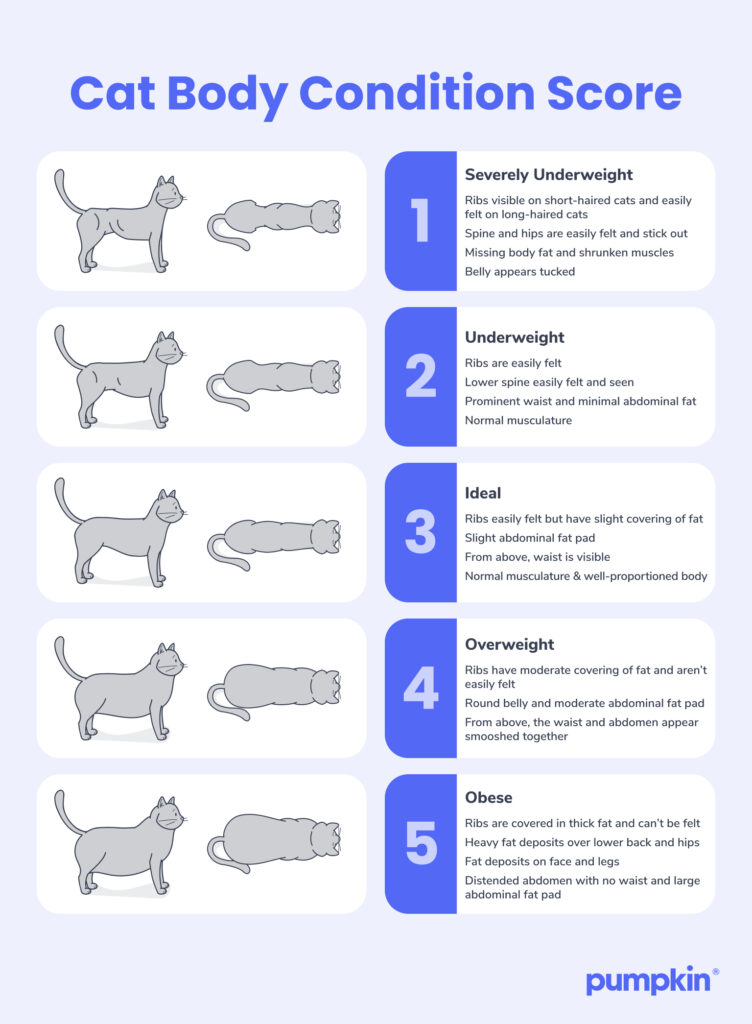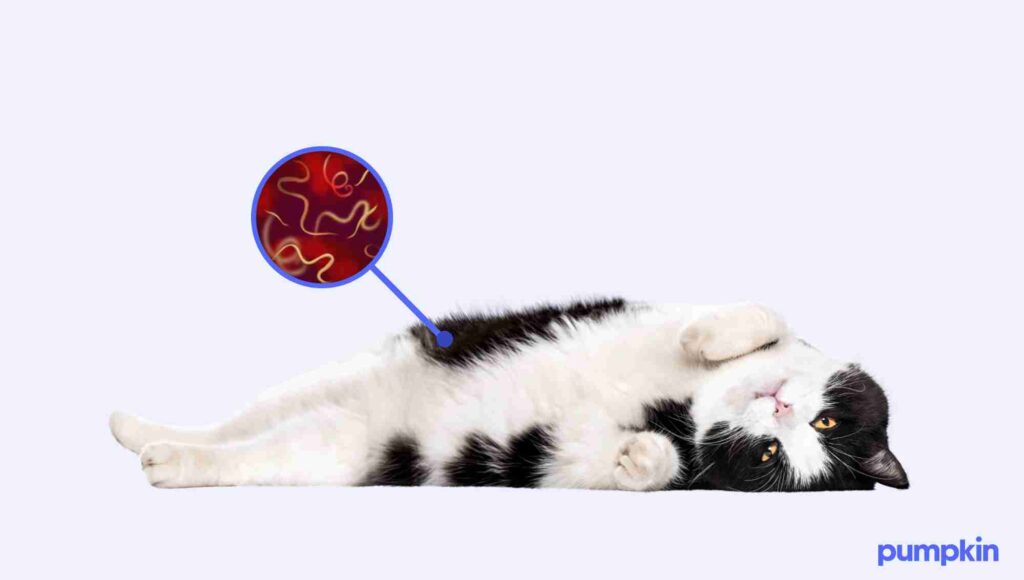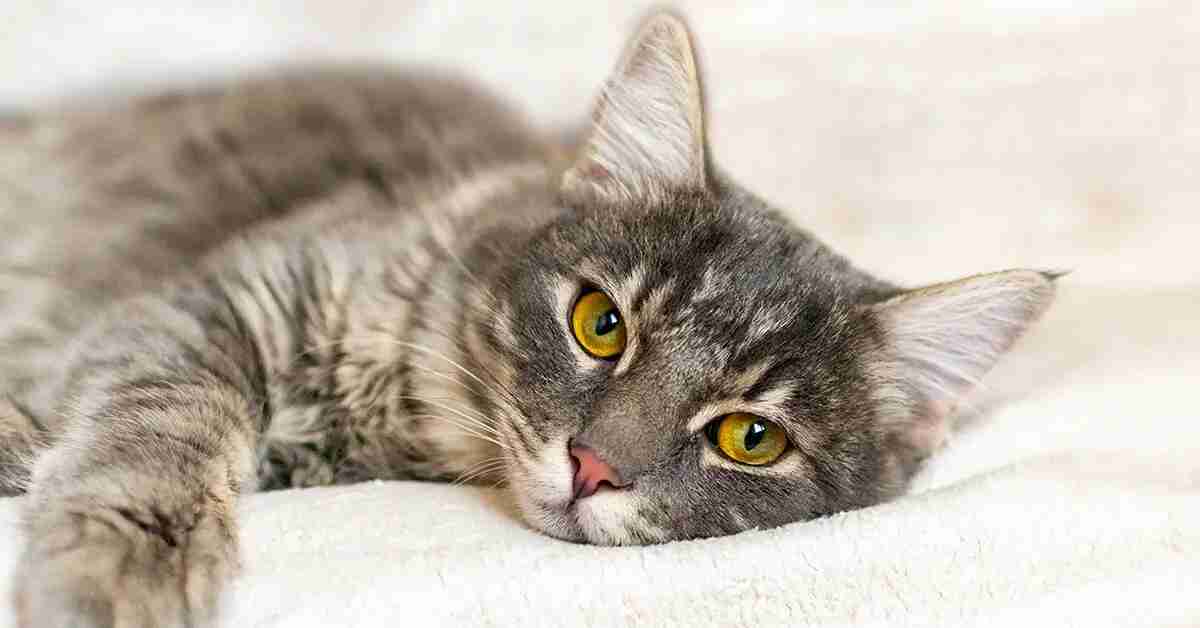Key Points
- Common cat diseases include upper respiratory infections, dental disease, chronic vomiting, and feline herpes.
- More severe cat diseases include kidney disease, feline leukemia, and heart disease.
- Vaccinations are available to protect your kitty from life-threatening and contagious feline illnesses such as rabies.
Cats are famously self-sufficient animals. They’re natural-born predators and masters at masking their weaknesses from their pet parents. Part of being a responsible cat owner is knowing when something isn’t right, but if you’re a new pet parent, it can be hard to tell if your cat isn’t feeling well or just being shy.
It’s important to recognize the warning signs and symptoms of common cat illnesses so you know when to seek veterinary help.
While the thought of your feline friend getting sick can be frightening, no cat is immune to common illnesses (at least, not until they’ve been vaccinated). We examined more than 33,000 pet insurance claims to find the most common cat diseases, their symptoms, and treatments.
Common diseases in cats: What does the data say?
From June 2022 to December 2024, these were the most frequently reported diagnoses in cats based on claims filed with Pumpkin:
- Kidney disease (2,197 claims)
- Periodontal disease
- Diabetes
- Allergies
- Respiratory infections
- Inflammatory Bowel Disease (IBD)
- Cancer (with Lymphoma being the most common)
- Hyperthyroidism
- Asthma
- Ear infections
- Feline Lower Urinary Tract Disease (FLUTD)
However, it’s also important to note that because most cats with pet insurance get their vaccinations, this data does not include illnesses commonly seen in unvaccinated and stray cats, some of which we included below.
Common cat diseases & symptoms
Cats are prone to illnesses like kidney disease, dental issues, and upper respiratory infections. If your kitty is experiencing any of the symptoms described below, check in with your veterinarian.
1. Vomiting
A vomiting cat could be suffering from any number of diseases — or they could have simply eaten something that didn’t agree with them.
Common causes of vomiting range from eating something poisonous, like a dangerous house plant, to infection, urinary tract diseases, or even diabetes. Less severe causes include eating too fast, subtle changes in diet, or hairballs.
Your cat may also drool excessively. Vomiting can leave your kitty severely dehydrated, so they may also experience abdominal heaving, lethargy, and excessive meowing.
If your cat throws up more than once a week, contact your veterinarian so they can perform blood work and other tests to determine the underlying cause.
2. Inflammatory bowel disease
Inflammatory bowel disease is a condition where the lining of a cat’s gastrointestinal tract becomes inflamed because of an abnormal immune response.
This interrupts the normal functioning of the digestive system and makes it harder for cats to digest food and absorb nutrients.

Some common symptoms of this condition include:
- Chronic vomiting
- Diarrhea
- Loss of appetite and changes in eating behaviors
- Weight loss
- Lethargy
- Abdominal discomfort
Veterinarians can diagnose this disease by combining blood tests and stool exams to rule out other conditions. They may also do ultrasound imaging to assess the GI tract or conduct a biopsy of the intestinal lining.
3. Kidney disease
Like humans, kidneys are a major organ in cats, and kidney disease can seriously threaten your cat’s health. The kidneys filter waste and toxins out of the blood and into the urine.
The organ also regulates mineral levels and triggers the production of red blood cells that carry oxygen throughout the rest of the cat’s body.
When part of the kidney is damaged, the rest of the organ works harder to keep up with the body’s demands, eventually wearing the kidneys out. If left untreated, harmful substances build up in their blood and eventually get worse over time, causing chronic kidney disease and even anemia.
Chronic kidney disease usually occurs in older cats, with early signs of kidney disease (weight loss and thinning fur) often dismissed as typical signs of aging.
Common symptoms of kidney disease in cats are usually obvious, and include:
- Increased thirst
- Frequent urination
- Dull and thinning fur
- Low energy levels
- Mouth ulcers
- Vomiting, lack of appetite, or weight loss
Although the damage done by kidney disease isn’t reversible, there are ways to treat your feline friend and help them feel better.
Early detection is important and your veterinarian is more likely to see early signs of kidney disease through routine appointments. If they determine that your cat has kidney disease, they will recommend an approach that combines dieting, medication, and hormone therapy.
4. Dental disease
Periodontal disease, or periodontitis, is one of the most common and serious cat health problems. Studies show that 50-90% of cats over 4 years old have some form of dental disease.
Periodontitis occurs when food particles and other bacteria accumulate along a cat’s gum line and eventually become plaque.
When combined with saliva and minerals, it transforms into tartar, which leads to the irritation and inflammation of the gum edges, known as gingivitis. If left untreated, this eventually leads to periodontal disease, which can cause serious pain and discomfort for your feline friend.
Signs of periodontal disease include excessive drooling, turning their heads to the side when chewing, or being reluctant to eat. Additional symptoms include:
- Red or swollen gums
- Bleeding along the gingiva at the base of their teeth
- Persistent bad breath
- Tooth discoloration or visible tartar
- Pawing at the teeth or mouth
- Chewing only on one side of the mouth
- Difficulty picking up or dropping food
- Resistance to tooth brushing
- Irritability or moodiness
Teeth and gum diseases in cats are largely preventable and treatable with appropriate preventative dental care and monitoring.
Daily tooth brushing with a child-size toothbrush, gauze sponge, dental wipe, or finger brush is the most common way to help keep your cat’s pearly whites against gingivitis and periodontal disease.
Routine visits to the vet, oral examinations, and dental cleanings are also recommended. Have a look at Pumpkin’s guide to cat dental health.
5. Heart disease
Congestive heart failure is a common health problem in older cats. Heart failure starts when the muscle in the heart’s left ventricle becomes so thickened that it can no longer efficiently pump blood throughout the body.
Hyperthyroidism, high blood pressure, and heartworm disease can contribute to your cat’s congestive heart failure. Signs of heart failure can be hard to notice, as your cat may be less active or have difficulty breathing, but typically include:
- Decrease in appetite
- Weight loss
- Difficulty sleeping or lying down (shifting frequently)
- Sudden collapse or fainting
- Fast breathing
If your feline friend is in distress, such as open-mouth panting, or if their hind limbs appear paralyzed, seek medical attention from an animal hospital as soon as possible.
Once your cat has been diagnosed with heart disease, your veterinarian may recommend several medications to ease the work of your feline friend’s heart. These include diuretics to remove the excess fluid and other medications to help your cat’s heart beat more efficiently.
6. Obesity
Obesity is a common condition among cats that is often not taken seriously, even though almost 60% of domestic cats in North America are overweight.
Obese cats are at risk for developing heart disease, kidney disease, arthritis, diabetes, and many other related conditions. Obesity also limits a cat’s ability for physical activity and can greatly compromise their quality of life.

But obesity in cats is much more than just overeating or taking too many cat naps. It can be caused by poor lifestyle, hormonal imbalances, genetics, or bacteria in your cat’s stomach and gut.
Typically, indoor cats are prone to developing weight-related problems, so their diet should be monitored closely. Your veterinarian will develop a plan to help your cat be more active or offer feeding recommendations to curb their weight gain.
7. Upper respiratory infection
We all get sick when the seasons change — and just like humans, cats sneeze, sniffle, and cough, too.
A cat’s upper respiratory tract (nose, throat, and sinus area) is prone to infections caused by various bacteria. Kittens and other cats exposed to extra stress in shelters or boarding facilities may catch a virus, but the good news is they’re easy to recognize.
The symptoms of upper respiratory infections in cats include:
- Sneezing
- Squinting, blinking, or rubbing their eyes
- Nasal congestion/runny nose
- Cough
- Clear to colored nasal discharge
- Drooling
- Fever
- Lack of energy
Your veterinarian may prescribe antibiotics if an infection is present. If your cat is experiencing eye discharge or nasal congestion, they may prescribe eye or nose drops.
Broad-spectrum antibiotics will help to protect your kitten’s young immune system from other infections while sick with an upper respiratory infection.
8. Urinary tract infection
Cat urinary tract infections (UTIs) can affect cats of all ages and sizes but are harder to spot in kittens who are still litter training.
An infection in the urinary bladder occurs when bacteria travel up the urethra and into your cat’s bladder. UTIs are extremely painful and uncomfortable for cats. Common symptoms of UTIs in cats include:
- Frequent urination, but only peeing in small amounts at a time
- Urinating outside of the litter box
- Straining or inability to urinate
- Crying in pain while peeing
- Increased licking of the urinary opening
- Cloudy or bloody urine
- Drinking more water than usual
While not contagious, UTIs are often easily curable with antibiotics. Some vets may also prescribe pain medication, but if your cat has a UTI due to another underlying disorder, such as bladder stones or diabetes, then additional treatments will be prescribed.
We know getting your kitty the best care possible is top of mind. Learn more about Pumpkin Cat Insurance plans, which can help you cover the cost of unexpected accidents and illnesses throughout the course of your cat’s life.
9. Herpes
Cat herpes is a condition that manifests as an upper respiratory disease. It’s more formally known as feline herpesvirus-1 (FHV-1) and is an infection in the nose or throat.
Symptoms of feline herpes include:
- Red or swollen eyes
- High fever
- Reduced appetite
- Nasal congestion or discharge
- Sneezing
- Lethargy
- Corneal ulcers
The vet will typically see signs of herpes in areas surrounding the face (i.e., eyes, nose, and mouth), but they may also do bloodwork.
The standard cat vaccines (FVRCP) protect against the FHV-1 virus, making your cat less likely to get this feline disease. Plus, you can give your adult cat annual booster shots. While vaccines don’t eliminate the virus, they help reduce the risk of severe symptoms.
10. Immunodeficiency virus
Feline immunodeficiency virus is a serious infectious disease that weakens a cat’s immune system. It’s primarily transmitted through bite wounds from infected cats since they carry the disease in their saliva.
Symptoms of feline immunodeficiency virus include:
- Fever
- Loss of appetite
- Weight loss
- Diarrhea
- Recurring infections
- Anemia
- Inflammation of the gums
- Swollen lymph nodes
Affected cats in their last stages of the disease can sometimes also develop terminal conditions, such as cancer.
Vets typically diagnose this disease by checking the cat’s vital signs and drawing blood to test for FIV antibodies. There’s currently no vaccine for FIV. The best way to prevent your kitty from getting this virus is to keep them indoors and away from stray cats.
11. Leukemia
Feline leukemia virus is the most fatal cat disease in the United States. Like the immunodeficiency virus, it weakens a cat’s immune system, making them more susceptible to infections and certain types of cancer, such as lymphoma.
It’s transmitted through several bodily secretions, including urine, saliva, mucus, the mother’s milk, and more.
Symptoms of the feline leukemia virus include:
- Lethargy
- Weight loss
- Loss of appetite
- Persistent fever
- Pale or yellow gums
- Enlarged lymph nodes
- Poor coat condition
- Recurrent infection in the skin, urinary, and respiratory areas
Your vet will run different tests to determine whether your kitty has leukemia, including the ELISA and IFA tests. Currently, there isn’t a treatment for feline leukemia, which is why getting your cat vaccinated against this virus is so important.
12. Worms and parasites
Worms and parasites, including hookworms, tapeworms, and coccidia, are common among cats. If left untreated, these parasites can not only cause discomfort but also lead to other health problems, such as anemia and severe dehydration.
Symptoms of worms and parasites in cats include:
- Vomiting
- Diarrhea
- Weight loss and loss of appetite
- Bloated
- Worms in the stool or around the anus
- Lethargy

Vets typically diagnose worms and parasites by taking a stool sample and looking for eggs or parasites under the microscope. You can treat worms and parasites with oral medications and deworming treatments.
What to do when your cat is sick
What’s the best thing you can do to prevent your cat from getting sick? Take them for routine vet checkups. Once every year is usually enough for adult cats. Also, make sure you keep them up to date with vaccinations.
Typically, your cat will need several vaccinations when they’re a kitten and a booster vaccination every one to three years thereafter.
On the other hand, if your cat is already sick and showing some of the symptoms mentioned above, it’s best to get them to your vet as soon as possible. With quick action, you may just be able to prevent the disease.
Early detection can make it easier to manage symptoms and give your kitty a happy and long life.
FAQs
- https://www.vet.cornell.edu/departments-centers-and-institutes/cornell-feline-health-center/health-information/feline-health-topics/feline-dental-disease
- https://vcahospitals.com/know-your-pet/inflammatory-bowel-disease-in-cats
- https://vcahospitals.com/know-your-pet/gingivitis-and-stomatitis-in-cats
- https://vcahospitals.com/know-your-pet/obesity-in-cats
- https://bestfriendsvet.com/library/the-top-three-fatal-feline-diseases/
- https://vcahospitals.com/know-your-pet/are-booster-vaccines-necessary-for-cats




